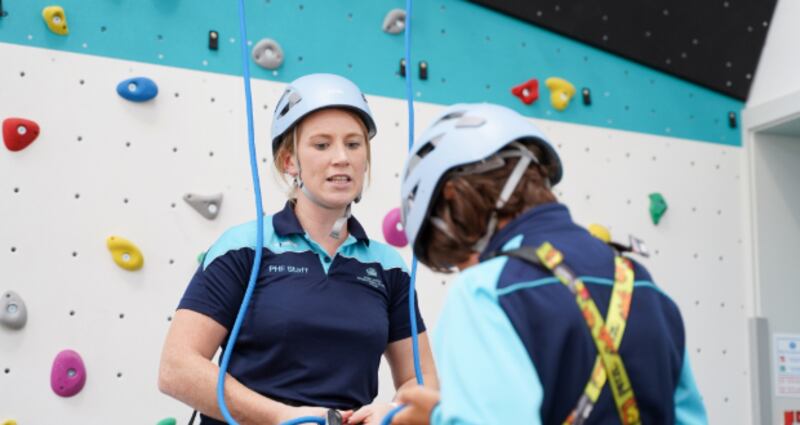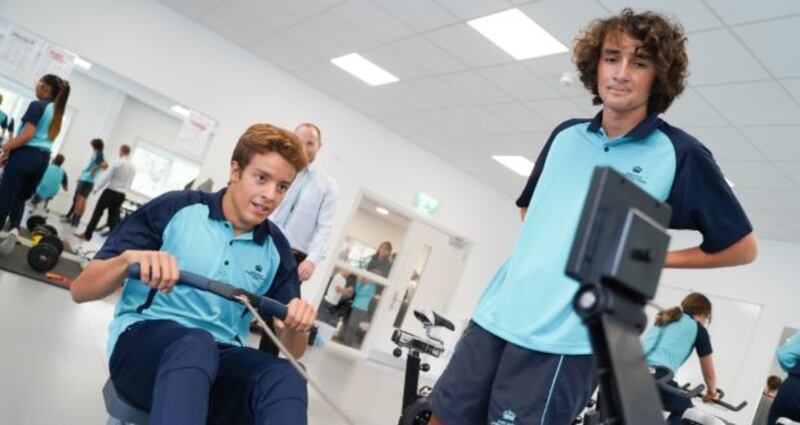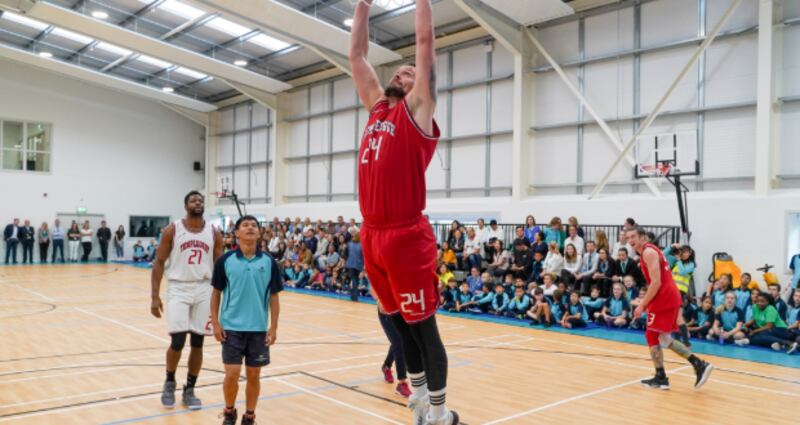Having opened its doors in South County Dublin last year, Nord Anglia International School Dublin’s innovative approach to learning can be equally applied on the sports field as well as in the classroom. The Dublin school, which is one of a family of 66 schools in 29 countries, offers the globally recognised International Baccalaureate or IB to all age groups.
‘The inquiry-based learning approach that this method encourages is equally relevant in sport”, explains Dunphy.
“That’s why it’s known as Physical and Health Education, PHE, and not simply PE,” explains Dunphy, who graduated in physical education and biology from DCU .“It’s a very different philosophy. The health component is very central to the programme, there’s a big theory element as well as the practical side.”
This shift in focus means it’s not simply about getting children to be physically active for a set time each week, she adds. “It’s about creating awareness and giving them information from a very early age about the importance of exercise and its effects on the body.”
A different approach to teaching sports

This is a markedly different approach to how PE has been traditionally taught in schools, Dunphy acknowledges.
“In the IB curriculum, it is embedded into their education the whole way up from age 3 to age 18, where students can take Sports Exercise and Health Science (SEHS) as a subject in the Diploma Programme.” This is the final exam that students sit in order to enter university.
Schools can often mix PE and sports with competitive games. This means the traditional curricular approach isn’t reaching everyone when it comes to physical activity, Dunphy says.
We focus on helping students find something they are passionate about by offering a wide range of activities including yoga, boxing, dance and pilates
“Some schools often focus on certain sports, with males playing rugby and females playing hockey, for example, and seek to pursue it at a competitive level. You can end up pushing your elite athletes and others get left behind. It’s not students involved in elite sports who have issues with obesity and lack of activity, often it’s the students who weren’t really catered for in school in terms of physical education.”
NAIS Dublin therefore aims to clearly differentiate between what they call CCAs, or co-curricular activities (after school) and PHE activities (In school activities). They also focus on helping students find something they are passionate about by offering a wide range of activities – yoga, boxing, Taekwondo, dance and pilates are just some of those on offer. These activities change each term and Dunphy says that the PHE staff regularly discuss with students what they would like to see on offer. These activities – for the most part – are included in their school fees.
'Skills-based approach'

Also different to the traditional model of PE teaching is NAIS Dublin’s use of a “concept and skills-based approach”, explains Dunphy.
“Developing fundamental motor skills is a huge part of what we aim to do as well as developing their understanding of the concept. We are not necessarily trying to get them to be outstanding in just one sport, but rather we are trying to get them to understand the concepts of passing, for example, and then see how they can transfer that to football, basketball, or volleyball.”
The hope is that this approach will enable them to become physically literate and will instil a love for physical activity in students that goes far beyond their school years.
“There is huge drop-off in physical activity levels when children reach adolescence and by helping students find something that they love, they will be more likely to pursue physical activity outside of school or into adulthood.”
Designing custom sports facilities for students' needs

Dunphy explains the school allocates ample time towards what they see as a crucial subject.
“The Secondary students have three hours of PHE each week while the Primary have two hours. Primary and Secondary students also get a full term of swimming, roughly 12 weeks, in addition to their two hours of PHE,” says Dunphy, adding that NAIS Dublin’s goal is that every child leaving the school will have a basic level of swimming ability and knowledge of water safety.
Unsurprisingly, the sports facilities are second to none. The sports teachers at the school had the unique opportunity to work alongside the architects during the design phase. Drawing on designs from Nord Anglia schools abroad, they were able to design and build a custom sports hall to fit exactly what was needed in Dublin, explains Dunphy.
Alongside the “early years” multi-purpose games area for younger children, there is a full-size, floodlit astro-turf pitch for football and rugby, a competition-sized basketball court, and state-of-the-art volleyball facilities. A fitness area, gymnastics room and dance room have just been joined by a brand-new climbing wall, installed this summer.
Ensuring students flourish

The newly opened sports hall is known as The Edge Sports Hall. “It’s about getting students out of their comfort zone and getting them to push themselves to the edge and fly and flourish. Dunphy notes that many schools do not separate the educational element of PE and competitive sports and that this traditional approach does not necessarily appeal to, or reach every student when it comes to meeting physical activity guidelines.
A graduate of DCU, Doireann Dunphy is an experienced teacher having taught in the UK, Qatar, Australia, and Turkey, before teaching at Nord Anglia schools in China and Switzerland. She admits she is thrilled to be able to bring back some of what she learned to Ireland, saying the Nord Anglia philosophy means every student will be eager to be involved in sports in some way.
“Having been abroad and seen how much more there is to offer, it’s fantastic to be able to bring this approach into a school in Ireland. There are so many jobs linked to sports, nutrition and health science now, it opens so many doors.”
For more information, visit www.naisdublin.com
NAIS Dublin is a candidate school for the International Baccalaureate (IB) Diploma Programme and pursuing authorisation as an IB World School*
*Only schools authorised by the International Baccalaureate can offer any of its four academic programmes: the Primary Years Programme (PYP), the Middle Years Programme (MYP) and the Diploma Programme or the Career related Programme (CP).









